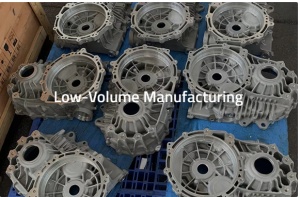A commercial 3D sand printer is a major breakthrough in the rapid prototyping and manufacturing arena, specifically for casting very complex metallic parts. The printers deliver the detailed sand molds and cores required to produce complex metal parts using modern, highly sophisticated techniques. More information on what the device can do shows how they are changing the face of traditional manufacturing process.
Complex Molds – Rapid Prototyping
Industrial 3D sand printers are great as they are capable of producing complex geometries which are difficult to achieve using traditional sand casting approaches. These printers can make small, detailed parts with undercuts and thin walls in layers as fine as 0.2–0.3 millimeters. With this rapid prototyping capability, manufacturers are able to go from design to sand mold in a few hours instead of days, so development times for a new product line are rapidly reduced. On a Toolcraft MPS US Webinar, Brian Rynott, VP Sales and Operation Director at Armor Group UK, described how a part that can take several weeks to produce using conventional methods can be completed in less than 24 hours using mold printing.
Greater Productivity And Efficiency
In fact, they can greatly cut down on labor surrounding mold making, improving productivity. An industrial 3D sand printer can consistently and unpredictably (24/7) rip produce sand formless molds without human labor, making it the ideal solution in order to face the rigors of 3D sand printing. This automation not just accelerate the production cycle yet furthermore decreases labor costs in addition to humanity error that makes the output much more regular along with reliable.

As cost saving in small scale production.
Cost efficiency: One of the major advantages to using an industrial 3D sand printer is the cost efficiency. Old-school mold-making requires expensive upfront tooling, especially for custom or low-run productions. On the other hand, the cost barrier for small batch sizes is also eliminated, as with 3D sand printing there is no need for any physical tooling, so even the production of just a single part or even a custom part becomes economically viable. Tooling savings up to 50-75% for manufacturers over conventional methods
Flexibility in Design Changes
This is essential in an evolving market, to have the freedom to be able to change design quickly. By utilizing a 3D sand printer, changes to the mold are as simple as edits to the digital files, and new molds can be printed at no additional cost and turned around quickly. It is especially beneficial in the prototyping phase — which typically results in several iterations. So, designers and engineers can already test a lot of different scenarios and get feedback without the limitations of conventional molds making process.
Environmental Advantages
Manufacturing needs to be more environmentally sustainable. 3D sand printers curb waste and bring environment benefits on industrial scale. Unlike traditional methods where excess material from mold carving is thrown away, 3D printing applies the necessary amount of sand to develop each layer of the mold Furthermore, the process also has minimal impact on the environment as the sand utilized in the printing process is typically recycled.
Ultimately, the industrial 3D sand printer expands the capabilities of the casting industry by boosting productivity, cutting costs, and adding to the versatile capabilities in manufacturing. The capability to print complex parts with fine detail can lead, in most cases, to improved designs and innovation, and in turn enabling faster product development cycles.